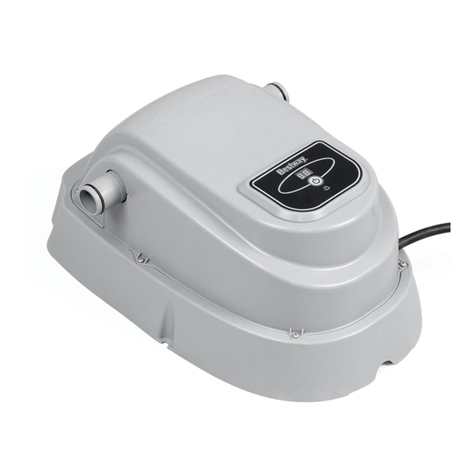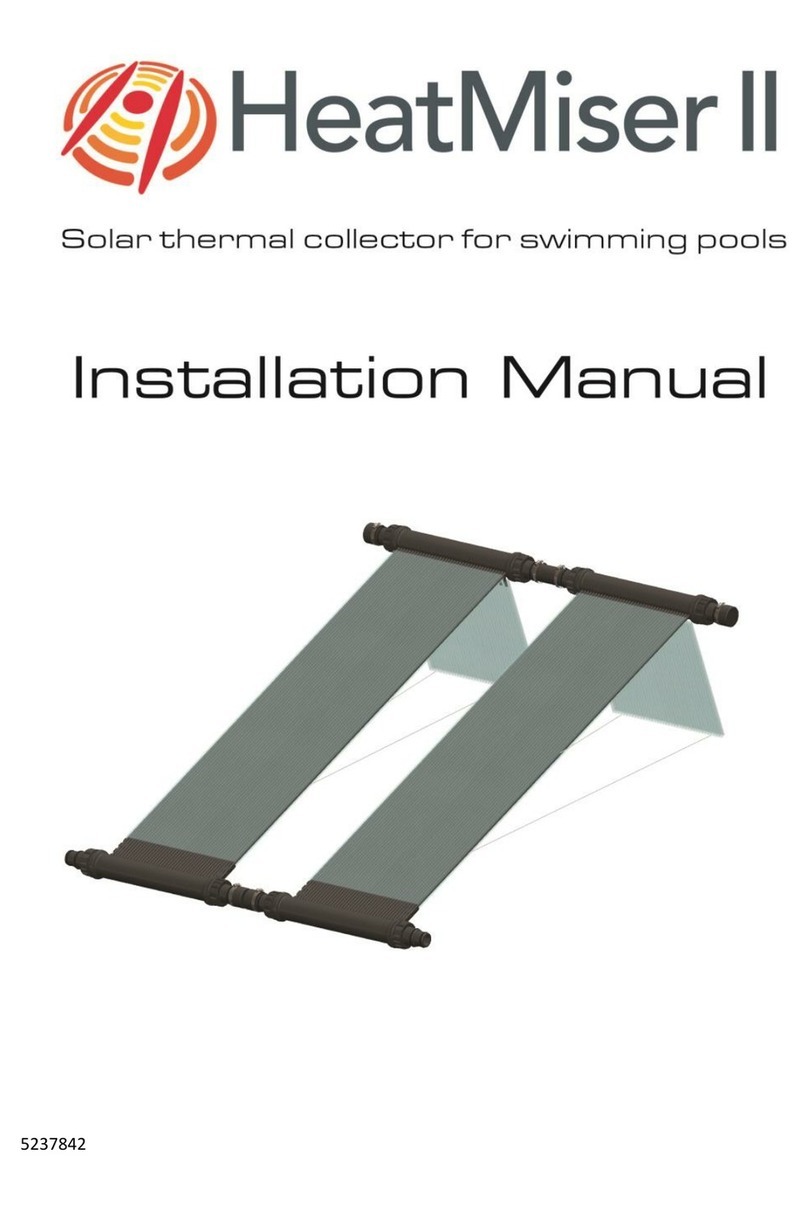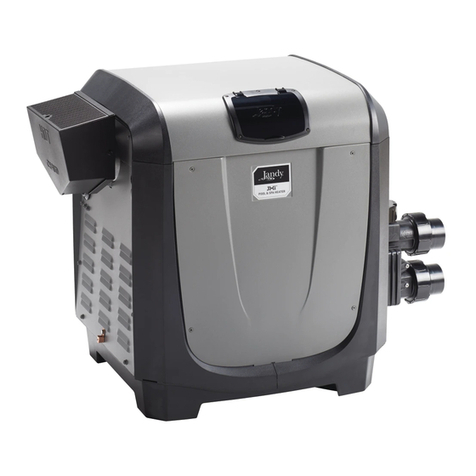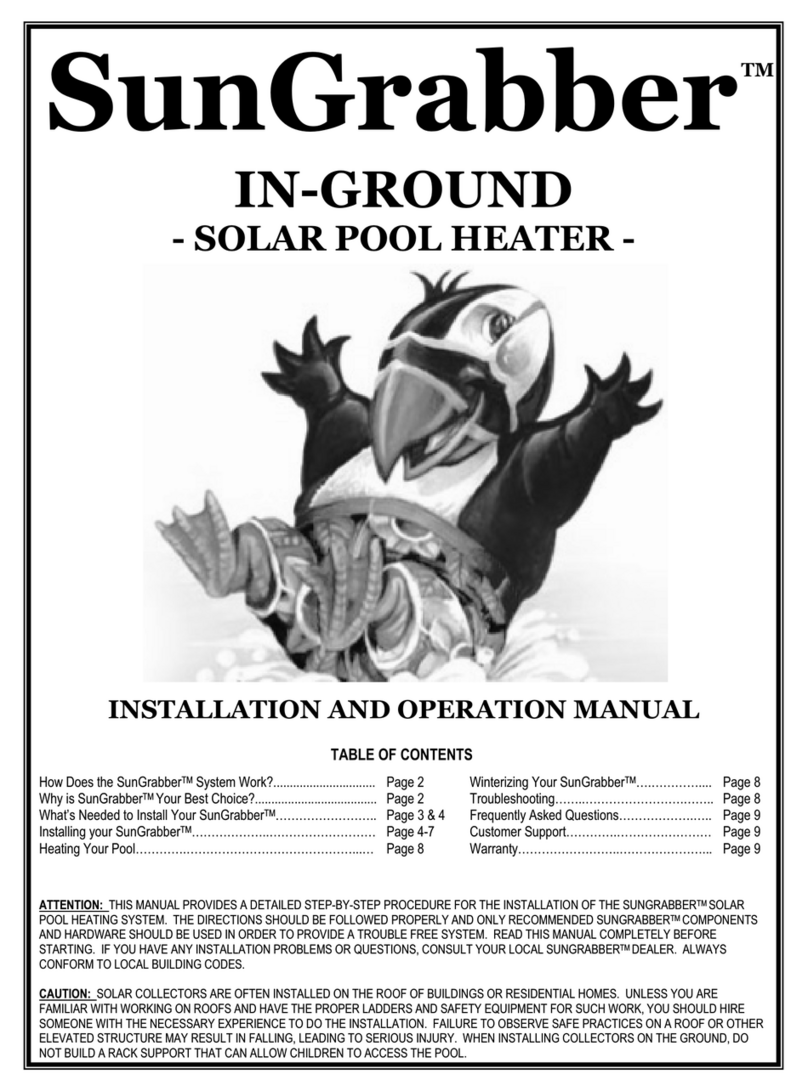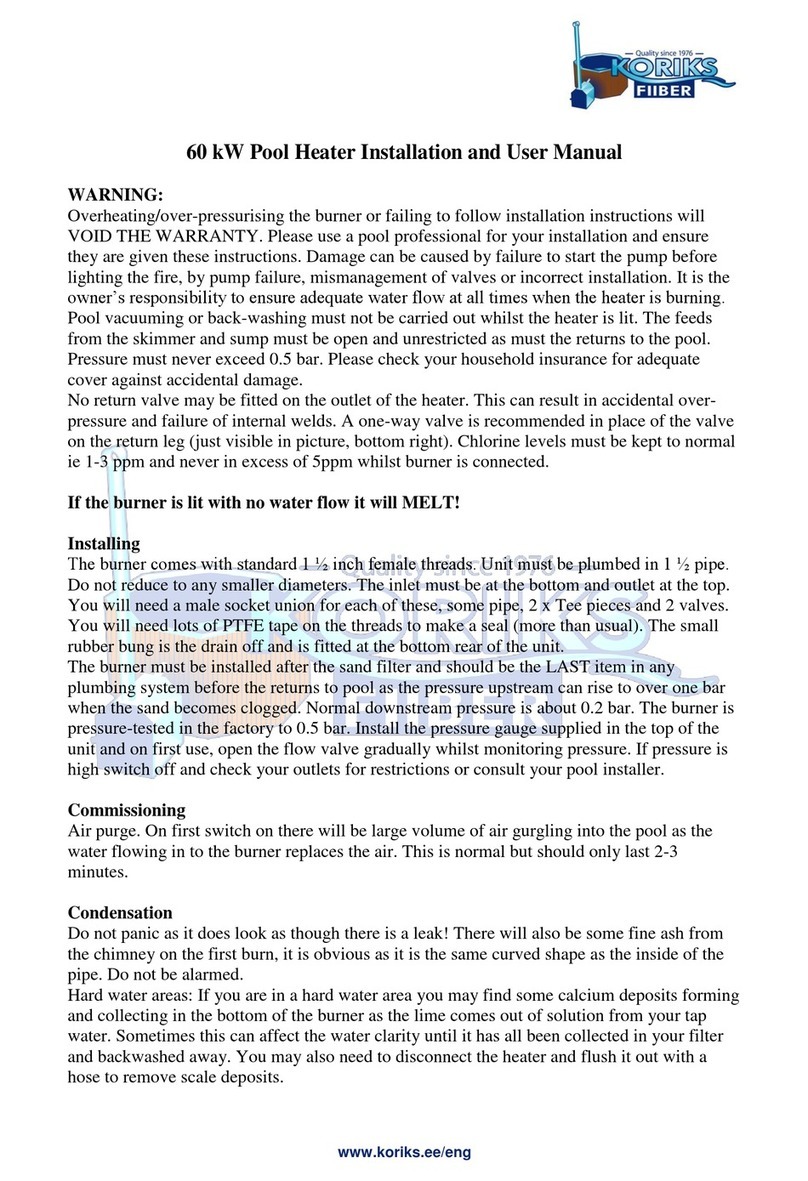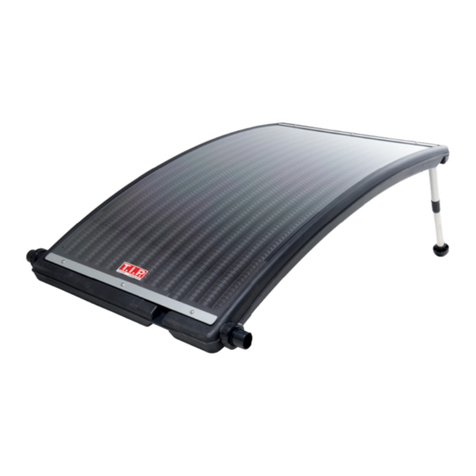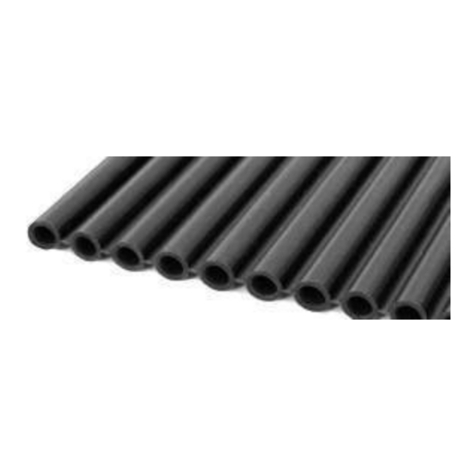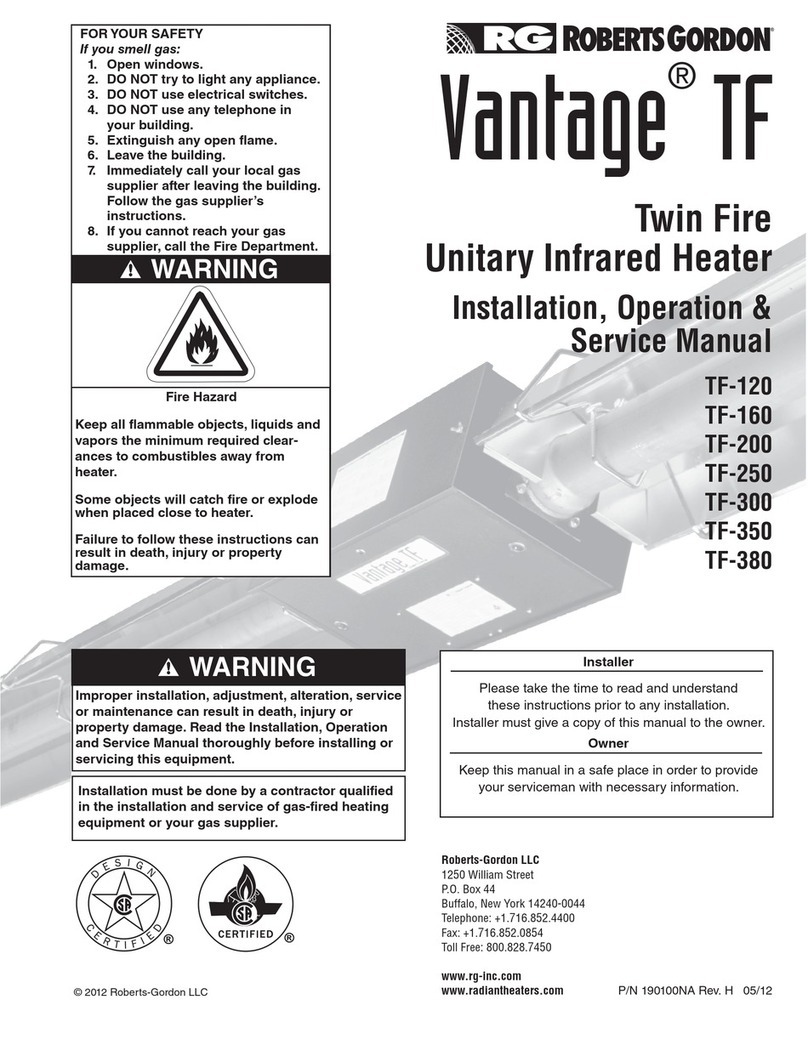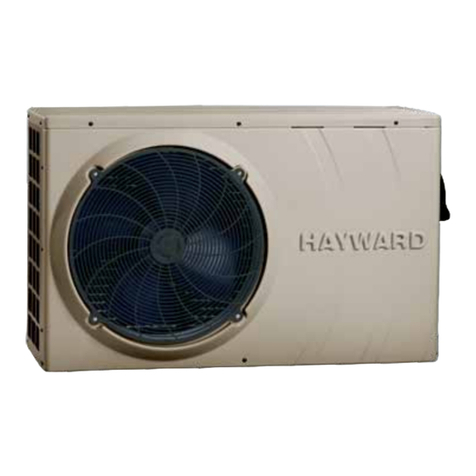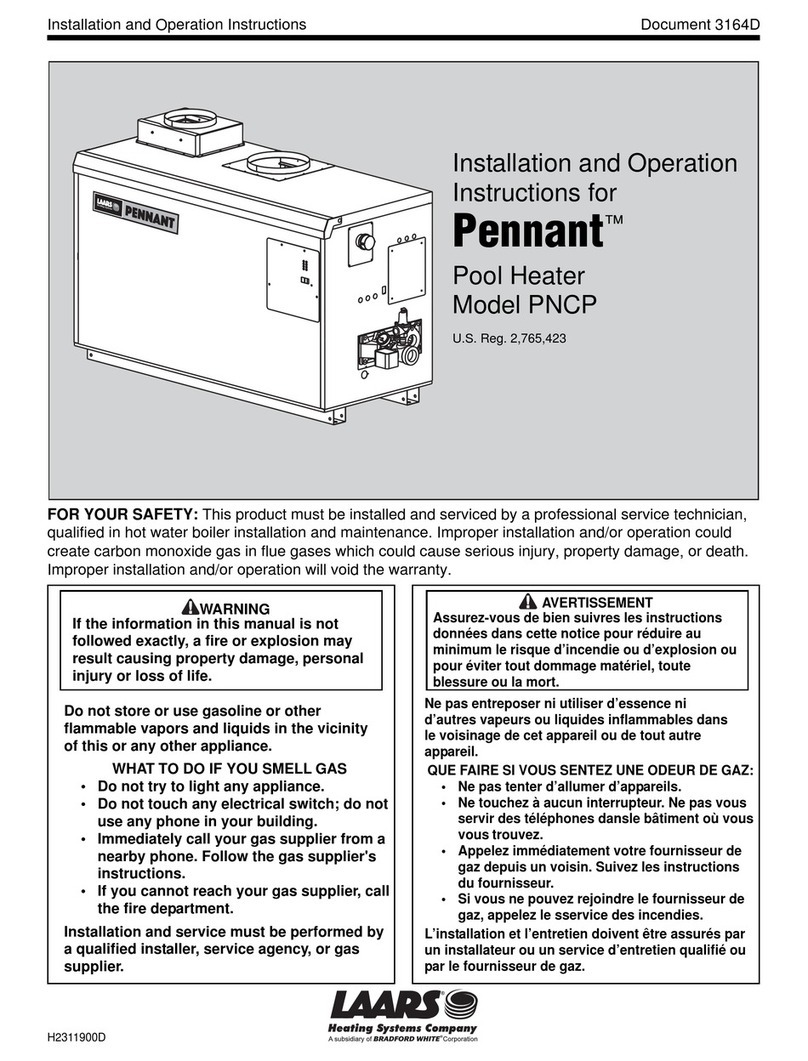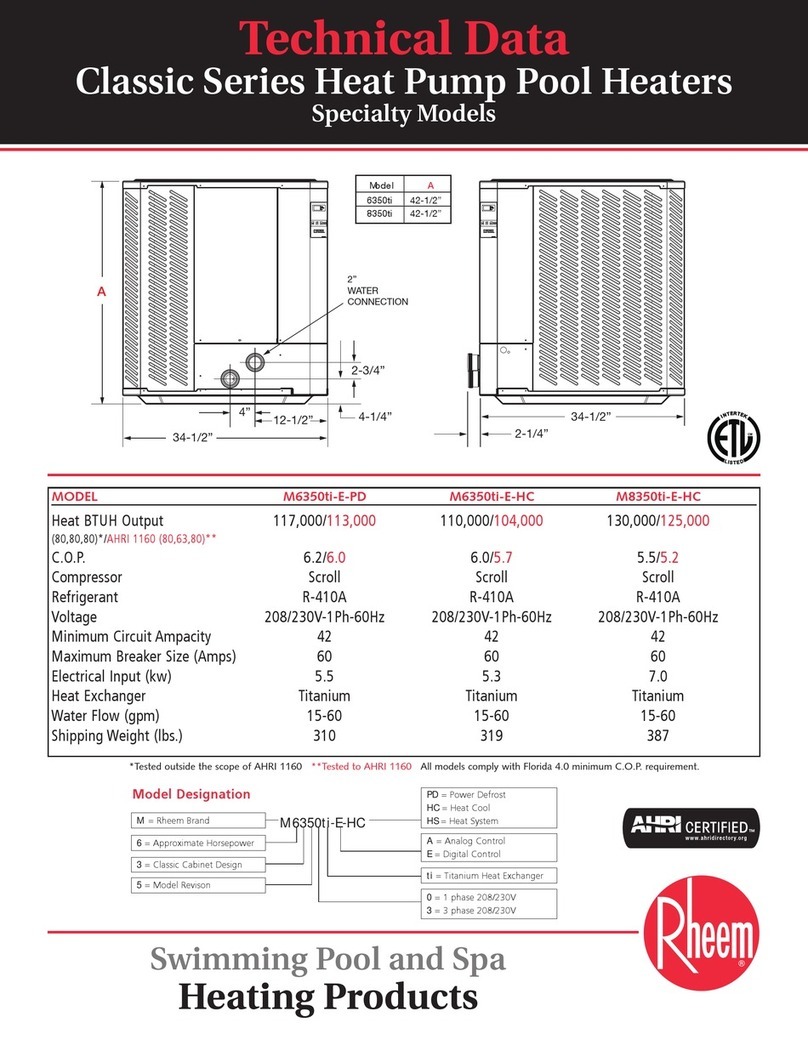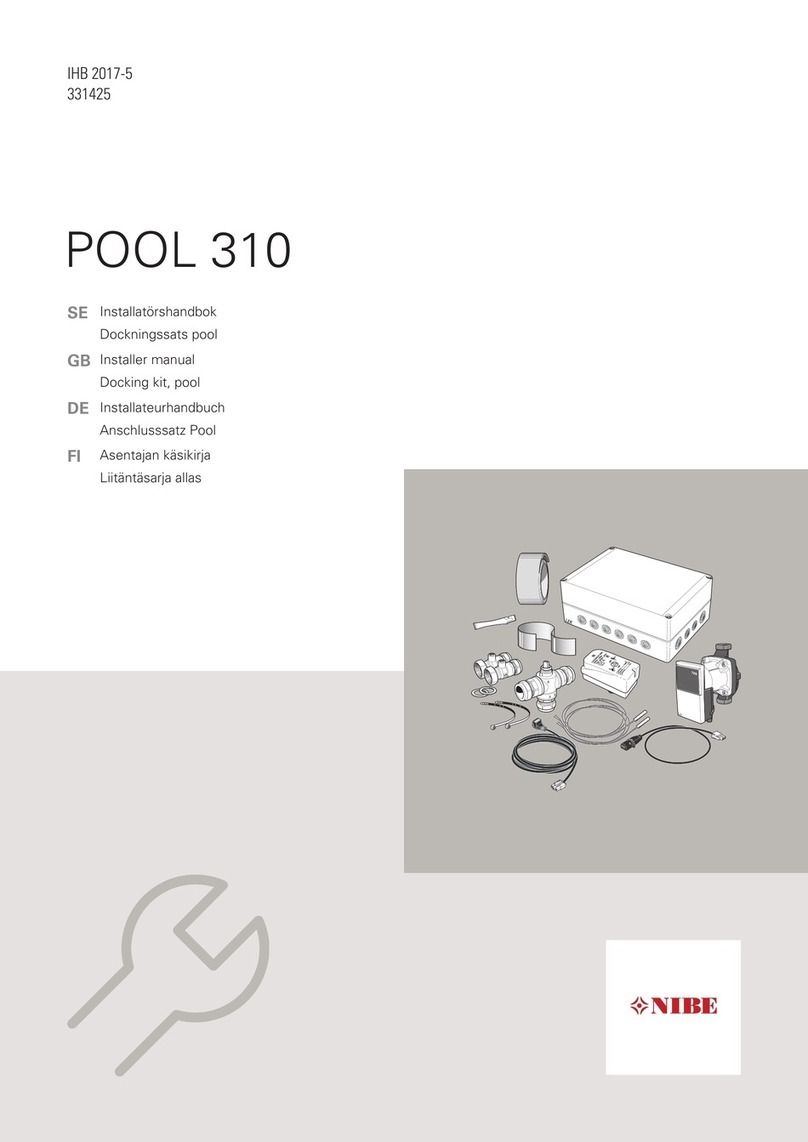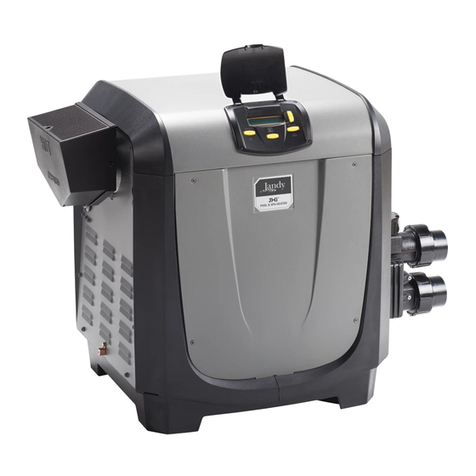
Page 6
the room containing the heater must have its own
combustionand ventilation openingsas described
below (see Fig. 8).
Vent the XL-3 to a permanent chimney or
through the roof with an approved stack when it is
installed indoors. You must install a barometric draft
control between the heater and the stack with a
minimum 13" clearance between the chimney
connector and any combustible surface. Observe
NFPA Standard No. 31 and all national and local
ordinances.
Run the vent pipe as directly as possible with
minimum turns. Never use a vent smaller than 9"
(23cm). On lateral runs, maintain a minimum pitch of
1/4" (.6cm) per linear foot. If a chimney is used, the
total equivalent straight length of flue piping between
the heater and the chimney should not exceed 75% of
the vertical height of the chimney above the flue pipe
connection. The chimney should be at least 9" (23cm)
diameter. Maintain adequate clearances between the
vent pipe and combustible materials. Check local codes
and the vent manufacturer’s instructions for proper
clearances. The 7" (18cm) dia. inner stack must be in
place.Any change in the amount of draft in the
combustion chamber can affect the flame
characteristics. An approved barometric draft control
must be used on all indoor installations to maintain a
clean and consistent flame. When the system is
properly adjusted, the pressure in the stack below the
draft control will be approximately minus .03" W.C. If
this draft pressure cannot be achieved, the chimney is
too short or too small. Take corrective action.
Avoidlocating thechimney termination ina
location susceptible to down draft conditions, or near
ventilationinletstothebuilding.
2D-2. Clearances
Providethefollowingminimumclearancesfrom
combustiblesurfaces:
Water Inlet/Outlet side 24" (61cm)
Other side and rear 6" (15cm)
Front Control compartment 24" (61cm)
Chimneyconnector 13" (33cm)
2D-3. Combustion Air Supply
Do not install the heater in a room that does not
have enough air supply to support combustion. There
must be two openings to outside air provided; each
opening must have a free area equal to 80 sq. in.
(516.1 sq. cm). It is good practice to put one opening
near the floor and the other near the ceiling.
When installing the heater in an interior room, all
doors communicating with outside air must have
specified openings (see Fig. 9). There must be no
Figure 8. Venting, Indoor Installation.
